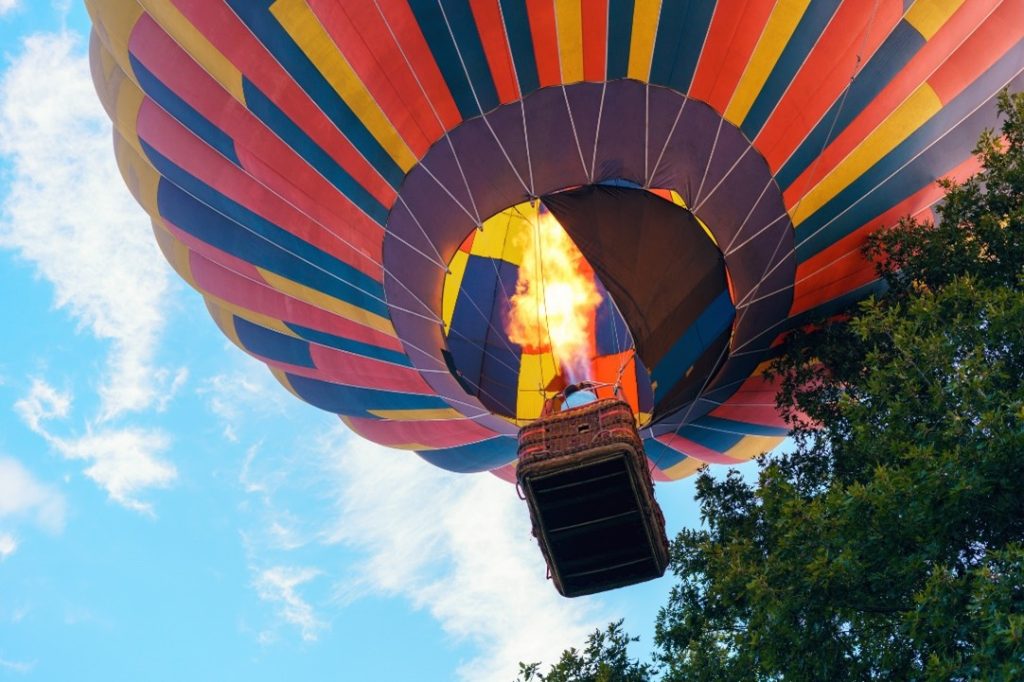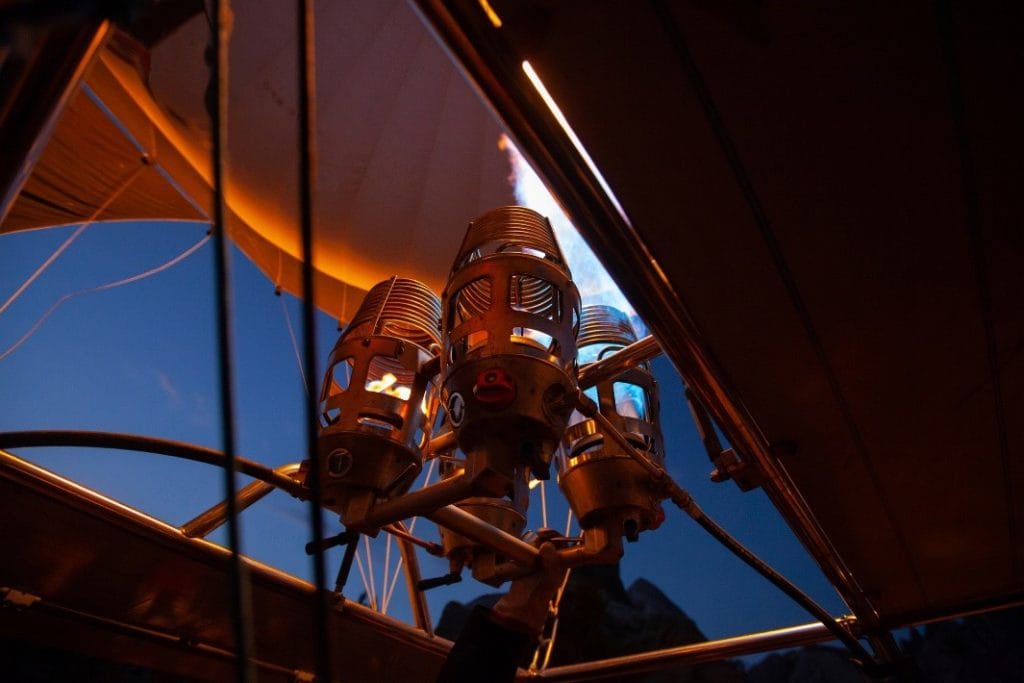Which Gas Is Used in Hot Air Balloons?
Many people are fascinated by hot air balloons, the way they work, what makes them fly and how they came to be, us included.
In this blog, we’re talking about everything hot air balloons, including which gas is used to get them in the air and why that’s the chosen gas option.

Hot Air Balloon History
Hot air balloons are fascinating; they have frequented our skies since 1783 when a French scientist set a flight going consisting of a duck, a sheep, and a cockerel. It was a flight that lasted just 15 minutes. The balloon was lifted by hot air and had a compartment of “lighter than air” gas at the very top. The incredible feat was followed by the scientist taking flight himself later in the year.
The first hot air balloon in the UK followed the next year when a Scottish aviator took flight over Edinburgh. An Italian diplomat completed a 24-mile flight from London to Hertfordshire with his dog, a cat, and a caged pigeon.
Since those early days, technology developed, meaning the flight times got longer and longer. In 1836 the first long-distance flight took place from London to Germany, covering 500 miles in 18 hours. Most of the journeys in the early days used gas power to power the flight; it wasn’t until the 1960s that a burner changed the power to hot air instead.
In 1999 Bertrand Piccard was the first person, alongside co-pilot Brian Jones, to fly a hot air balloon worldwide. The pair achieved the feat in just 20 days. Hot air balloons are only permitted to travel to 3,000 feet up these days, but records for the highest flight have surpassed 69,000 feet! They are a fantastic invention, but what powers them now?

What Gas Is Used in Hot Air Balloons?
In the modern day, the gas of choice for hot air balloons is propane.
This is because it is very light, relatively cheap, and easy to transport, helping to allow the balloons to stay in the air. Often people assume hot air balloons are filled with helium like your standard birthday balloons that float. They would be right to some extent, as helium is used in hot air balloon flights occasionally; however, you need a large quantity of helium, and as it’s prone to leaks and other complications, especially at high altitudes, you could end up stranded in the air. It is more standard to find propane gas in modern-day hot air balloons.
The chemical composition of propane makes it harder to accidentally ignite, which provides an additional safety element to the journey. Other benefits include the fact that propane burns cleanly with no soot or smoke to ruin the views or make passengers sick.
How Does Propane Help Balloons Fly?
When liquid propane is heated, it turns into a hot gas, hotter than the air around it. This helps the balloon rise; the burner under the balloon is filled with propane, and the gas is released into the balloon. The pilot can control the height and direction of the balloon as the gas is released. As the air in the balloon cools during the flight, the pilot will heat more propane to fill it again. Therefore, a pilot continually fires the burner up during a flight.

How Much Propane is Used in a Single Journey?
You don’t want to run out of propane during a flight, so the pilot will measure how much of the gas is needed to get them where they want to be and make sure they stock more than this on the balloon in case of emergency.
The average balloon will burn around 15 gallons of propane in an hour. However, several factors will affect that number, including how many people are on the journey, the balloon size, and the trip’s length.
As a passenger, you may not need to know this, but understand that any pilots taking you on a journey will have a valid private pilot’s licence and be aware of the amount of fuel to store in their balloon.
How to Store Hot Air Balloon Propane
As mentioned above, propane is easy to transport. It is a really safe gas that rarely causes any problems. However, you should follow some essential rules if you need to store propane for a hot air balloon.
You should never store propane gas inside unless it is a canister that you are sure is empty. You also shouldn’t refill or inspect a propane gas canister indoors as it could lead to serious injury. Keep it outside, in a well-ventilated, dry area and away from children or animals. Don’t keep it in a vehicle unless you are transporting it to a new storage location.
Keep your propane stored upright and in a stable place, so the canister can’t be knocked down; you may want to build a barrier or container for it.
Finally, you need to get your tank re-qualified should it be older than ten years to ensure its safety.
Where to Get Propane for Your Hot Air Balloon?
Standard liquid propane is available from a local convenience store. However, this isn’t suitable for a hot air balloon. For one, it wouldn’t be available in a convenient size; also, it may not be good quality propane. A higher quality of propane will last longer for further flight distances.
If you are looking for propane gas for your hot air balloon, contact us; as dedicated gas cylinder suppliers, we can find you the perfect size canister for your basket. Also, different sizes are available, from 47kg propane gas bottles to 6kg propane gas bottles.

